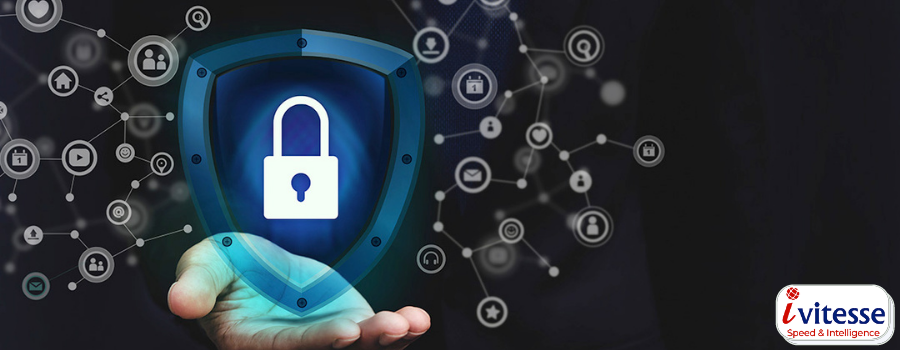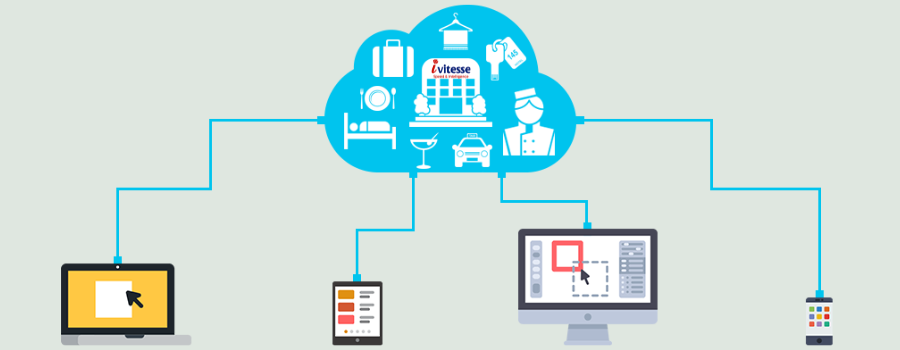Adoption of new technologies leads to qualitative growth, but at the same time, there is a high probability of quantitative data leakage. While adopting cloud technology, it is important to view the security of your infrastructure as one of your key responsibilities. There are various organizations that are still unsure about the security of their data in a cloud environment.
What should be on the IT infrastructure security checklist for SMBs or any size organization looking for enhanced network security management? Summarized practical and actionable suggestions for enhancing business network security.
1. Perform an audit of critical IT assets To draft an official security checklist, the SMB must first inventory its most important IT assets.
This includes the following analysis:
People: These are the knowledgeable and dedicated staff that make up all the teams and domains of the IT department, and the people that those teams report to within the larger organizational structure.
Process: The day-to-day roles, procedures, responsibilities, and initiatives that IT staff assumes and utilizes throughout the SMB.
Technology: The physical infrastructure of a network ecosystem that describes everything: hardware, software, storage methodology, files, applications, etc.
Performing an IT asset audit provides visibility into the business' entire IT environment. It provides a guided compass to guide you through the ultimate security recommendations checklist, so it won't come back.
2. Research leading security solution provider Investigating industry security leaders is the second step for SMBs and other organizations to begin their network and IT security checklist. Organizations begin investigating security partners with products and services that meet their exact requirements using an audit of critical IT assets.
Today, companies like Cisco create and manufacture leading networking hardware, software, technical security systems, and other products related to enterprise IT infrastructure Security . By working with comprehensive computer networking partners such as Cisco, SMBs can consolidate their security support through a single convenient vendor if they provide the various security mechanisms required for their critical assets.
That said, partnering with a leading security solution provider such as Cisco provides you with a “one-stop security store” for securing your business network, offering products such as:
- Advanced malware protection
- Advanced firewall defenses
- Phishing, spoofing and ransomware business email security
- A central breach alert system
- Network visibility and segmentation features
- Secure remote network access solutions
- Multi-factor authentication technology
- Cloud security solutions
3. Prioritize out-of-date software patches Operating systems and software that are not updated frequently create vulnerabilities throughout the SMB's IT mechanisms. This unsuitable patchwork stack has the ability to write code that exploits vulnerabilities when attackers don't keep their devices up to date on a regular basis. For software and desktop security, make sure that your business network security checklist includes:
- Audit inventory of physical hardware, location, and IP addresses as well as all operating systems and versions used by the business, including those coming into the network via BYOD. The goal of these audits is to consolidate the number of operating systems and shadow ITs in use.
- Review the operating system to make sure you are using the latest version to eliminate bugs and vulnerabilities.
- Dynamic anti-virus software updated regularly
- Modern security controls for firewalls and routers
- Frequently updated and effective email filters to protect employees from spam, phishing and malware
4. Deploying data recovery (DR) and business continuity solutions Backing up enterprise data regularly is an SMB IT best practice, but more than half admit that they are not prepared for minor data loss incidents, from hard drive malfunctions to external leaks. Whether cloud-based, in-house or both, data recovery should include standardized efforts such as:
- Recovery tests performed regularly.
- Backup system tested weekly.
5. External Supplier Relationship Review From procuring raw materials to hiring contractors to maintaining utility contracts, third-party services are a fundamental part of a fully functional modern business. It is not inevitable, it is inevitable. However, more and more studies show that SMBs with fewer external vendors experience fewer security alerts, resulting in fewer instances of perceived network threats or inappropriate access. More than half (63%) of organizations with 1 to 5 vendors sent less than 5,000 warnings a year, and 42% of these warnings have been self-corrected. Only 42% of organizations with 5 to 10 external vendors mentioned the same alert resolution flow, indicating that vendor simplification is an IT network best practice that organizations should seriously consider.
6. Access control settings Network access layers what programs and applications employees can log in to and when and how. Employees with the "normal" user right only have access to the main program and have to go through a multi-check approval process for others. Users with "Advanced" user rights can use a wider range of applications while receiving ongoing security training. Access control best practices include:
- Set up a single, unique employee user account for all systems, programs, and apps—not shared accounts.
- Install a central login manager that tracks and records all program user records
- Enhanced endpoint security for remote or out-of-office workers using only one remote access portal or program
- Automatic monitoring of user server usage, flagging odd or irregular usage for manual review, logging in outside business hours
7. Integrate security into human resource operations The human resources department can be a strong defender of small business network security checklists. It has become an important resource for injecting safer technology users throughout the office, through onboarding and interacting with new and future employees, as well as daily points of contact with current employees. Too often, IT security remains the IT department's silo responsibility. This is understandable, but there are many ways that HR operations can augment their technical infrastructure with more secure human protocols.
- Create and maintain acceptable use policies for office hardware, including desktops, laptops, smart phones, and communications devices.
- Create and maintain explicit confidentiality agreements between third-party vendors, freelancers and contractors.
- Write and maintain best practice password rules and procedures. At a minimum, employees are required to update their passwords every 90 days.
- Go beyond simple usernames and passwords to implement required two-factor authentication for specific program logins.
- Create an entire network privacy policy for employees to sign.
8. Network connectivity, activity and configuration review Threat detection begins with basic network monitoring functions. SMBs and businesses of all sizes need to deploy technologies that allow connectivity activity on any server to have a clear picture of who is on the network, where they are accessing it, and why. Review all current network configurations. In other words, it means the connection between business hardware, software, and operating systems. If you are using Windows, make sure that each has a static IP address, a dedicated DNS (Domain Name Server) and WINS name.
- Create an official BYOD policy. Have your staff register those devices in your DNS list using out-of-band management best practices.
- Train appropriate email and communication activities specifically to help employees identify spam, malware and more business network threats.
- Describe allowed device usage and Internet access policies.
9. Remote network policy improvement Better control over remote endpoints is becoming increasingly important to today's SMBs. Whether these endpoints are freelancers working from home, customers ordering online, or third-party vendors interacting with some aspect of their internal network, businesses are now looking for more entry points for malicious cyber activity. Fortunately, as the demand for tighter remote network control and access increases, the following defenses are needed:
- Use a virtual private network set up for remote employee access. Only authorized devices can connect to the wireless Internet using LAN or wireless LAN authentication technology (Cisco's Wireless Security Suite). Install firewall intrusion detection software on all web connections and portals. Compiles secure wireless access connections and modems into DNS lists to prevent unauthorized connections from appearing.
10. ADOPT data encryption Data encryption works by converting plain text information stored according to an encryption key into a new pattern called ciphertext. Only those with the key can decrypt the data, adding an additional layer of defense against data thieves. Data encryption is especially important to protect customer information. Not only is there a growing move towards tighter regulations on consumer PII, but businesses have a reputation for protecting sensitive data when it comes to protecting it, such as: Customer financial information such as credit cards, debit cards, and bank accounts
- Social Security number
- military history
- Intellectual property or confidential business data
- Financial report
11. Establish a formal accident recovery plan As a final security measure, enterprises must plan within and between departments in the event of major cybersecurity incidents. This is called an incident response and recovery plan, and it sharply demonstrates the stability of the business' overall IT infrastructure Security and management and the ability to sustain an incident. Response and recovery plans must be fully integrated between systems. Your best bet is an ongoing planning audit, complemented by frequent vulnerability testing to identify system backdoors and weaknesses far ahead of outsiders.




